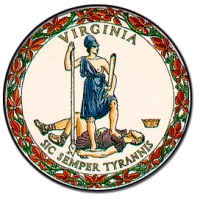 On May 17, Virginia and the nation recognized the 60th Anniversary of the historic Brown v. Board decision declaring state laws establishing separate schools for black and white students to be unconstitutional.
On May 17, Virginia and the nation recognized the 60th Anniversary of the historic Brown v. Board decision declaring state laws establishing separate schools for black and white students to be unconstitutional.
The anniversary was accompanied by commentaries recognizing the importance of the case – but few also recognized the pivotal role Virginia played. Remembering that role is important, too, because it continues to inform modern policy discussions in ensuring that no child in Virginia receive an inferior education or inferior expectations.
For while the case is named Brown v. Board of Education of Topeka, KS, the truth is that the case began here, in Virginia.
In 1951 Virginia public education operated under the doctrine of “separate but equal,” but the definition of equal left much to be desired. In Farmville’s high school for African-American children 450 students crammed into a building designed for 180. There was no gymnasium. No cafeteria. No science labs. No athletic fields. The newer school for white students up the road had all of these.
The response from the city fathers to the overcrowding was to build unheated tar-paper shacks that surrounded the school like so many chicken coops.
For 16-year-old Barbara Johns, this was separate but far from equal, and so she planned to lead every student on a student strike – declaring they would not return to school until the school system agreed to build facilities that were truly equal to those Prince Edward County’s white students attended.
Only a handful of students were aware of the plans, which were carefully devised over weeks. No adults were consulted – not teachers nor parents. Johns and her leaders tricked the principal into leaving the school and the student body into gathering at an assembly, at which point she laid out her plans and led the students out the door.
In 1951 this was, by all measures, a gutsy thing to do, and the students took the precaution of calling Richmond’s civil rights lawyers for representation. There was not a great deal of support at first. Attorney Oliver Hill, who would later win the Presidential Medal of Freedom, recalled years later that “We were talking about these children being out on strike and we were fully of the opinion that we were going to advise them to go back to school …”
Spottswood Robinson, who would later become the first African American appointed chief judge of the District of Columbia Circuit Court, remembered “I pointed out to (the students) that there were attendance laws. That was when one of them said that the jail was not big enough for all of us …”
Impressed by the students’ determination and reasoning, Hill and Robinson agreed to take the case provided that the issue became integration, not equal facilities, and that the students gather the support of their parents – no easy task from a generation raised not to rock the boat.
One parent years later summed up what many parents went through: “At first I didn’t know what to think. Then when I heard a suit might be filed I didn’t think that was right. But after they explained to us why they did it, I did think it was right. The children got so far ahead of the parents, they didn’t have anything to say to us …”
But the students of Moton High School succeeded in their task. Their actions would eventually become a part of Brown v. Board, providing 75 percent of the plaintiffs in that landmark case.
Three years after the Moton strike, Brown was decided.
Five years after that, faced with a federal demand to desegregate their schools, the Prince Edward County Board of Supervisors simply shut down public education. White students were educated at private academies; black students would be educated only when the Kennedy Administration eventually sent in volunteers to teach in churches and homes.
It would be more than two decades –from the strike in 1951 until the mid-‘70s – before Virginia’s schools would finally be largely desegregated.
Today, the accomplishments of those student strikers is commemorated at Moton High School, which is now the Robert Russa Moton Museum in Farmville. Virginia teachers, and parents who wish to offer a lesson for their children could do nothing better than to pay a visit.
For many, the history of those days has been forgotten … or never learned. Yet, they offer so many lessons for us: About the powers and the limits of the judicial system. About the strength of an active executive branch. About the concept of federalism. About race. About culture. About what it takes to create change.
And about what a group of high school students can accomplish when they are purposeful, respectful, plan carefully, and stand on the right side of history.
- The Most Progressive Budget in Virginia’s History - December 21, 2019
- When is a Clean Water Act Permit Needed? - December 21, 2019
- Should U.S. Consider Modern Monetary Theory to Improve Economy? - December 21, 2019

